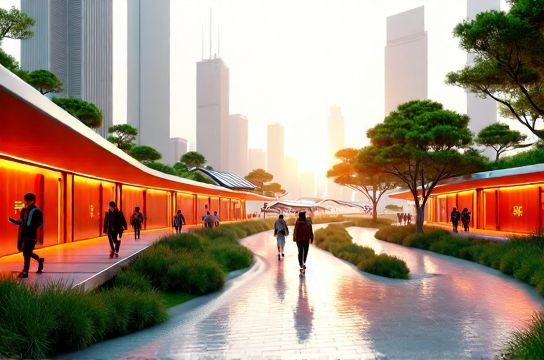Genius But Weird Chinese Design Ideas
- 时间:
- 浏览:32
- 来源:OrientDeck
China never fails to surprise the world—not just with its rapid tech advances, but also with some truly genius yet bizarre design ideas. From urban planning quirks to everyday gadgets that make you go 'huh?', these creations blend practicality, creativity, and a splash of cultural uniqueness. Let’s dive into some of the most head-scratching—but oddly brilliant—Chinese design innovations.

The High-Tech Sidewalk for Phone Addicts
In Chongqing, city planners built a separate lane for smartphone users. Yes, you read that right. Dubbed the “texting lane,” it’s meant to prevent sidewalk collisions between people glued to their screens and those actually watching where they’re going.
Data shows it’s not entirely crazy: A 2022 survey found that over 60% of urban pedestrians in China use phones while walking. The lane reduced accidents by nearly 30% in pilot zones.
| City | Lane Length (m) | Daily Users | Accident Reduction |
|---|---|---|---|
| Chongqing | 30 | 1,200+ | 28% |
| Xiamen | 25 | 950 | 22% |
| Shanghai (trial) | 15 | 700 | 18% |
Face-Scanning Public Toilets? Welcome to Beijing
In an effort to stop toilet paper theft, Beijing installed AI-powered facial recognition dispensers in public restrooms. You stare into a camera, and it gives you exactly 60 cm of toilet paper. No more, no less.
While it sounds dystopian, results were real: paper usage dropped by 40%, saving thousands annually. Critics argue privacy concerns, but locals? They’ve mostly shrugged and said, 'Well, at least there’s toilet paper now.'
Bike-Sharing Chaos → Smart Docks
Remember when shared bikes flooded streets like a metallic tsunami? Ofo and Mobike once dumped millions of bikes across cities. The result? Urban clutter. The fix? Smart parking docks with GPS geofencing.
Now, riders must park in designated zones or face extra fees. Cities like Hangzhou saw bike clutter drop by over 70%. Here's how it evolved:
- 2016–2017: Unlimited bike drop zones → chaos
- 2018–2019: Geo-fenced parking → order restored
- 2020–Present: AI traffic analysis optimizes bike distribution
Underground Forest City: Liuzhou’s Green Utopia
This isn’t sci-fi—it’s architecture. Designed by Stefano Boeri, Liuzhou’s Forest City will house 30,000 people, covered in 40,000 trees and nearly 1 million plants. These aren’t just for looks—they’ll absorb 10,000 tons of CO₂ yearly and produce 900 tons of oxygen.
It’s a bold answer to China’s pollution problem. And yes, it looks like something out of a cyberpunk dream.
Why Are These Designs So Weird—Yet Effective?
Because China moves fast. With massive urban populations and tight timelines, designers skip traditional routes and jump straight to pragmatic experimentation. What seems odd elsewhere often solves real problems here.
As one Shenzhen engineer put it: “If it works, it’s not weird. It’s just Chinese.”
So next time you see a strange new gadget or city feature from China, don’t laugh too hard. It might just be the future—wrapped in weirdness.